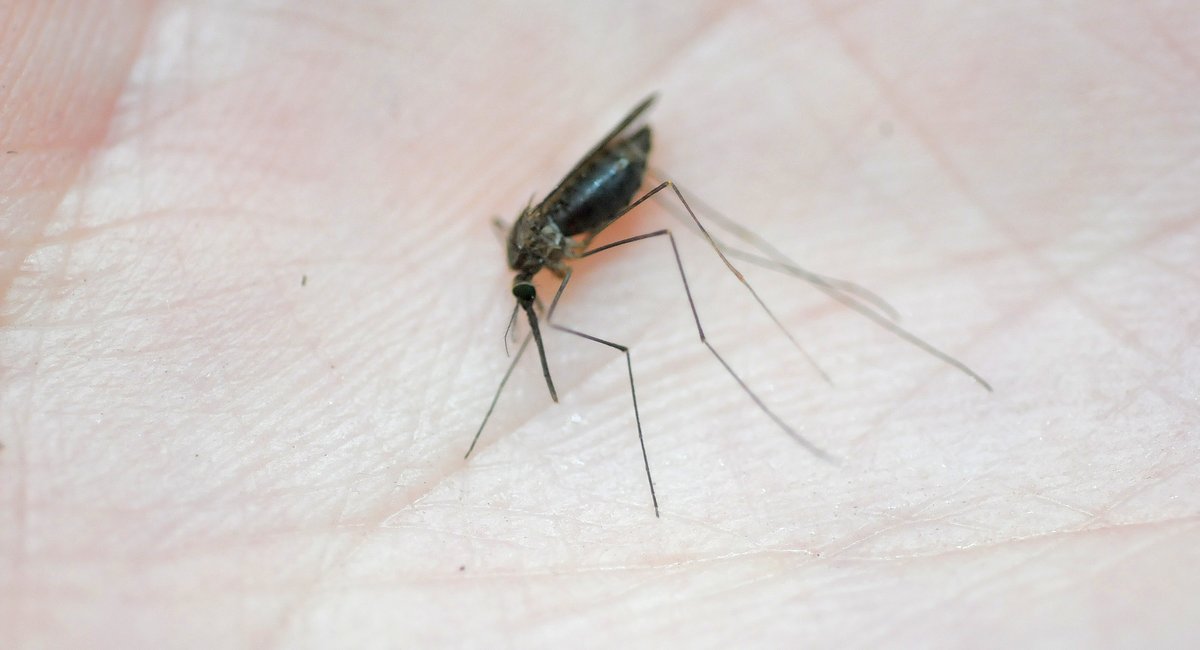Fall is here, but the mosquitoes are still buzzing in the New York metro area — and with them come mosquito-borne illnesses, including eastern equine encephalitis, or EEE.
Last month, New York state recorded its first human EEE death since 2015, in Ulster County, leading the state’s health commissioner to declare the disease an imminent threat to public health.
WNYC’s Janae Pierre recently spoke with Bryon Backenson, an epidemiologist with the New York state health department, about EEE and the risks of mosquito-borne illness through the usual end of mosquito season at the end of October. They also discussed measures to protect yourself from the disease.
A lightly edited transcript of their conversation follows below.
Janae Pierre: What exactly is EEE and why is it considered such a significant threat in New York right now?
Bryon Backenson: Eastern equine encephalitis, or EEE, is a mosquito-borne illness that is really rare. We’ve only had 12 cases since we first had our first one in 1971, but the most important part about it is how fatal it can be.
Those 12 cases that we’ve had, eight of those [people] have died. And in general, the typical thought about EEE is that it can kill 30% to 40% of the people that it infects.
Gov. Kathy Hochul is coordinating a statewide response. What specific actions is the state taking in high-risk areas to combat the spread of EEE?
One of the things that we’re really trying to do is get the word out. One of the best things that can be done with regards to EEE is trying to get people to take what measures they can to protect themselves against mosquito bites. And I think that’s the main effort here with the declaration of an imminent threat to public health across the state. That will resonate with individuals and providers who can then share with people what they can do to protect themselves.
Other things that are going on right now are getting mosquito repellents available in state parks, at visitor centers and so forth, as well as state campgrounds. People who camp — and there certainly will be people who will be camping throughout October — are at a slightly higher risk because they spent so much time outdoors. And if you’re anything like me, it’s incredibly easy to get a mosquito caught in your tent.
What role can local governments and communities here in New York City play in supporting the state’s mosquito control efforts?
We can basically let people know what the right things to do to protect themselves against mosquito bites are wearing long sleeves and long pants. Cover up as much skin as you can, realizing that’s not always feasible when it’s very, very warm out. Using repellents following label instructions can also be really helpful with regards to preventing mosquito bites.
There are four real products out there that work really well with regards to protecting against mosquitoes. Those are DEET, picaridin, oil of lemon eucalyptus, and a chemical called IR3535. DEET is probably the most common, but all four of those will work really well to protect against mosquito bites.
You want to make sure that you follow the label instructions. Make sure that you only use as much as you need for that particular time that you’re out there. With something like DEET, for example, more doesn’t always necessarily mean better. The higher concentration of DEET just means a longer period of time that you’re protected. So, a standard 25% DEET should protect people for about four to six hours, which is typically perfectly fine for most of the time that we spend outdoors.
When you’re going to apply it to children, the main thing we want to make sure of is that when an adult applies it, apply it to your hands before applying it to your face, and have an adult apply it to children as well.
What are the key symptoms of EEE that New Yorkers should be on the lookout for, and when should they seek medical help if they suspect that they’ve been bitten by an infected mosquito?
The last “E” in EEE stands for encephalitis, which is a swelling of the brain. That swelling of the brain typically comes with terrible headaches, confusion, neurologic impairment, not necessarily knowing where you are, things like that.
Fever will also be present. There can sometimes be rash, sometimes be other flu-like illnesses, but those neurologic symptoms — that confusion, that terrible headache — are often the main signs and symptoms we see with EEE.
What practical advice does the New York state Department of Health recommend for residents in New York City to protect themselves?
New York City has a very robust mosquito surveillance and control program and has seen a lot of West Nile virus this year. West Nile virus being similar to EEE, in that it’s carried by mosquitoes, a lot of the messages that particular program has put out over the course of this particular summer to protect against West Nile virus also work against EEE. So hopefully a lot of the activities that New York City residents have heard about with regards to West Nile, if you just continue doing those with regards to EEE, you should be in good shape.
